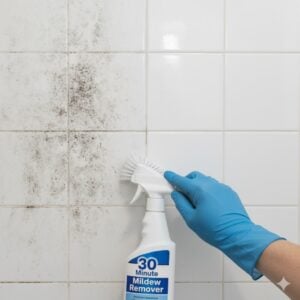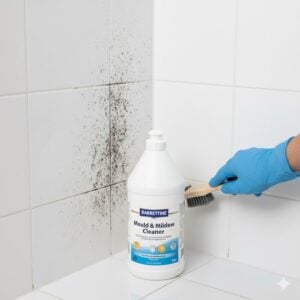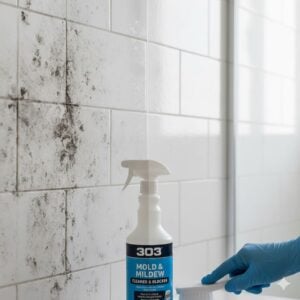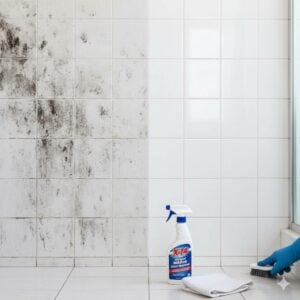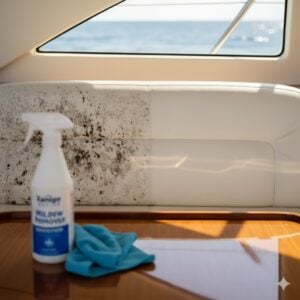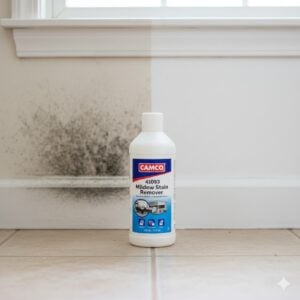Fungus in the home can be more than just an eyesore—it can cause musty smells, damage walls and furniture, and even lead to respiratory issues. Whether it’s mold creeping across your bathroom ceiling or mildew on bedroom walls, tackling the issue early with the right home remedies can help reduce the spread and create a healthier space. In this guide, we’ll walk you through the most effective home remedies for dealing with household fungus, especially in humid environments like the UAE.
Table of Contents
Toggle1. Understand What You’re Dealing With
Not all household fungus is the same. Mold, mildew, and other fungal growths thrive in damp environments but may require slightly different treatment approaches. The most common types you’ll find at home include:
- Black Mold (Stachybotrys chartarum) – Toxic, often found on walls and ceilings exposed to water leaks
- Aspergillus – A common indoor fungus that can aggravate allergies
- Cladosporium – Often appears on fabrics and carpets
- Mildew – A surface-level fungus that’s powdery and usually found on bathroom tiles or shower curtains
Identifying the type helps you choose the best remedy. A black, slimy patch might require different handling compared to light mildew on a window frame.
2. Natural Remedies You Can Try at Home

There are several ingredients already in your pantry or laundry cabinet that can help treat household fungus. While they’re not always a substitute for professional mold remediation, they can be useful for light to moderate infestations or prevention.
White Vinegar
White distilled vinegar is mildly acidic and known to kill about 80% of mold species. It’s particularly effective on non-porous surfaces like tile, glass, and metal.
How to use: Pour vinegar into a spray bottle (undiluted) and apply directly to the affected area. Let it sit for 1 hour, then scrub with a soft brush and wipe clean.
Baking Soda
Baking soda is a mild disinfectant and deodorizer that works best in combination with vinegar or water.
How to use: Mix 1 teaspoon of baking soda with 2 cups of water. Spray it on the area, scrub gently, and rinse. Repeat with vinegar for deeper cleaning.
Hydrogen Peroxide
With antifungal and antibacterial properties, hydrogen peroxide is ideal for hard surfaces such as bathroom counters and walls.
How to use: Use 3% hydrogen peroxide in a spray bottle, apply it, and let it sit for 10 minutes before scrubbing and rinsing.
Tea Tree Oil
Tea tree oil is a natural fungicide that’s effective but more expensive than other remedies. It also leaves behind a strong scent.
How to use: Mix 1 teaspoon of tea tree oil with 1 cup of water in a spray bottle. Shake well and spray directly onto mold. Do not rinse.
Lemon Juice
Though less powerful than other options, lemon juice is great for deodorizing and light mildew control.
How to use: Squeeze fresh lemon juice directly on the moldy area. Leave for five minutes and wipe clean.
3. How to Prevent Fungus from Returning
Removing fungus once is only part of the job—keeping it away is a long-term commitment. In humid climates like the UAE, proactive steps are essential.
Improve Ventilation
Open windows regularly, especially after showers or cooking. Use exhaust fans in bathrooms and kitchens to reduce moisture buildup. If natural airflow is poor, consider using a dehumidifier to maintain indoor humidity levels below 60%.
Fix Leaks and Damp Areas
Leaks from pipes, air conditioners, or roofs should be addressed immediately. Mold loves to grow where water sits. Dry any water spills or damp carpet areas as quickly as possible.
Use Anti-Fungal Paint
After removing fungus, repaint walls with mold-resistant paint. These paints contain additives that slow fungal growth and are particularly useful in bathrooms, kitchens, and storage rooms.
Keep Fabrics Dry
Don’t leave wet towels, clothes, or rugs lying around. Wash and dry fabrics regularly, and make sure closets are well-ventilated to prevent mildew on clothes and linens.
4. When Home Remedies Aren’t Enough
While the remedies above can work wonders for small-scale mold or mildew, some situations demand professional intervention. You should consider calling experts if:
- The fungus keeps returning even after multiple treatments
- The patch of mold is larger than 1 square meter
- You or your family experience respiratory issues, headaches, or unexplained allergies
- There’s a musty smell you can’t locate
We recommend not delaying. Mold and fungus grow fast and silently, especially behind walls and in air ducts. The sooner you act, the cheaper and safer the solution becomes. You can click the contact button on the right-middle of this post for a free mold inspection anywhere in the UAE.
5. Safe Cleanup Practices to Follow
If you decide to tackle fungus yourself, make sure to stay safe. Even small amounts of mold release spores that can irritate your lungs or skin.
Always Use Protection
Wear gloves, goggles, and an N95 mask to prevent exposure. Old clothes are best, as spores may cling to fabric.
Ventilate the Area
Open doors and windows before and after cleaning. If you’re using vinegar or hydrogen peroxide, be sure the room is well-ventilated to avoid inhaling strong fumes.
Don’t Mix Cleaners
Never combine vinegar and bleach or hydrogen peroxide with other cleaning agents. These combinations can create toxic gases. Stick to one remedy at a time.
Dispose of Materials Properly
Rags, paper towels, or sponges used to clean mold should be thrown out immediately in sealed plastic bags. Clean all tools with hot water and soap before reusing them.
Conclusion
Fungus is a stubborn guest in any home, especially in places with warm, humid weather like the UAE. But with the right remedies, habits, and a little consistency, you can reduce or even eliminate its presence from your living space.
From vinegar to tea tree oil, from baking soda to hydrogen peroxide—these natural remedies are effective, affordable, and easy to try. But if things get out of hand or the air in your home starts feeling heavy and musty, don’t hesitate to seek professional help.
We at Bio-On are here to guide you—whether it’s answering your questions or providing a full inspection and mold removal service. Just click the contact button on the right-middle of this post, and we’ll handle the rest with care.








